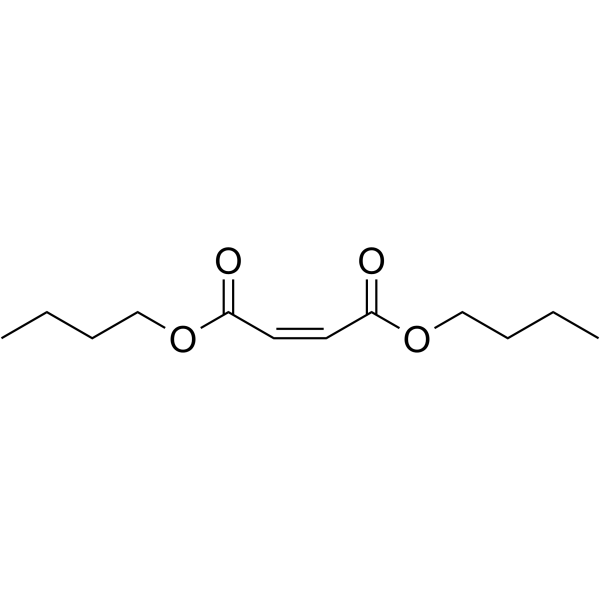n-Butyl fumarate

n-Butyl fumarate structure
|
Common Name | n-Butyl fumarate | ||
|---|---|---|---|---|
| CAS Number | 105-76-0 | Molecular Weight | 228.285 | |
| Density | 1.0±0.1 g/cm3 | Boiling Point | 280.0±0.0 °C at 760 mmHg | |
| Molecular Formula | C12H20O4 | Melting Point | -85°C | |
| MSDS | Chinese USA | Flash Point | 136.4±18.2 °C | |
| Symbol |


GHS07, GHS08 |
Signal Word | Warning | |
|
Designing greener plasticizers: Effects of alkyl chain length and branching on the biodegradation of maleate based plasticizers.
Chemosphere 134 , 106-12, (2015) The ubiquitous presence of the plasticizer di (2-ethylhexyl) phthalate (DEHP) in the environment is of concern due to negative biological effects associated with it and its metabolites. In particular, the metabolite mono (2-ethylhexyl) phthalate (MEHP) is a p... |
|
|
Composition-explicit distillation curves of diesel fuel with glycol ether and glycol ester oxygenates: fuel analysis metrology to enable decreased particulate emissions.
Environ. Sci. Technol. 42(20) , 7682-9, (2008) We recently introduced several important improvements in the measurement of distillation curves of complex fluids. The modifications to the classical measurement provide for (1) a composition-explicit data channel for each distillate fraction (for both qualit... |
|
|
Biodegradation of potential diesel oxygenate additives: dibutyl maleate (DBM), and tripropylene glycol methyl ether (TGME).
Chemosphere 52(5) , 861-8, (2003) The addition of oxygen-bearing compounds to diesel fuel considerably reduces particulate emissions. TGME and DBM have been identified as possible diesel additives based on their physicochemical characteristics and performance in engine tests. Although these c... |
|
|
Poly(2-hydroxy-3-phenoxypropylacrylate, 4-hydroxybutyl acrylate, dibutyl maleate) membrane controlled clonidine zero-order release.
Eur. J. Pharm. Biopharm. 66(3) , 429-34, (2007) Poly(2-hydroxy-3-phenoxypropylacrylate, 4-hydroxybutyl acrylate, dibutyl maleate) membrane was synthesized by UV curing method in our laboratory for the first time. When above-mentioned monomers were in the weight ratio of 4:4:2, the membrane not only had per... |
|
|
Contact dermatitis from dibutyl maleate.
Contact Dermatitis 13(5) , 337-8, (1985)
|
|
|
Occupational dermatitis from dibutyl maleinate.
Contact Dermatitis 13(5) , 314-6, (1985) 10 of 20 workers in an envelope-making factory developed contact dermatitis. The cause was dibutyl maleinate, which was added to a polyvinylacetate glue. Dibutyl maleinate is a strong sensitizer and should be withdrawn from industrial use. |
|
|
Allergic contact dermatitis from occupational exposure to dibutyl maleate.
Contact Dermatitis 60(5) , 298-300, (2009)
|